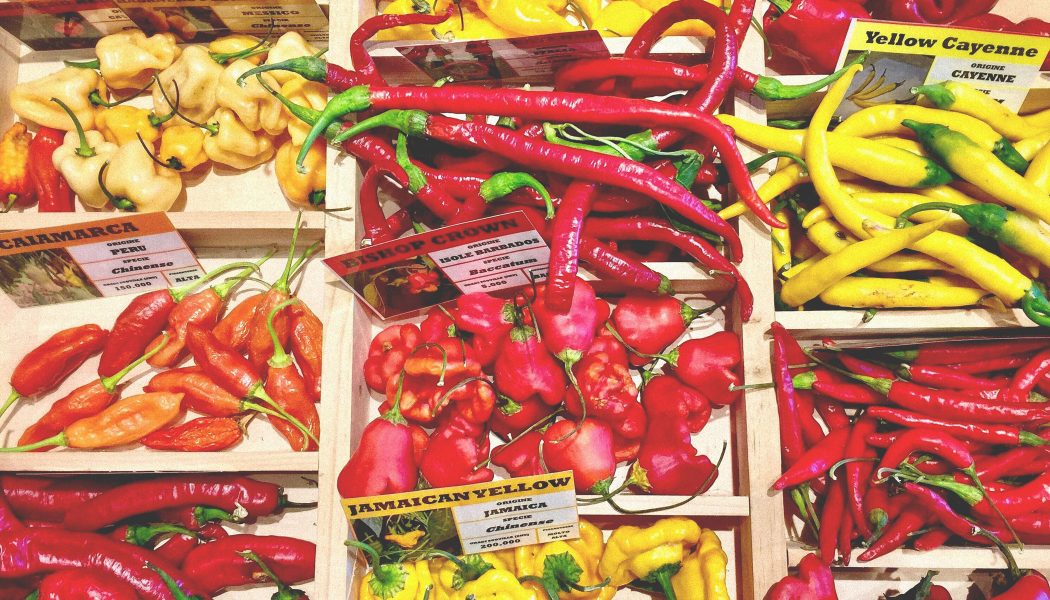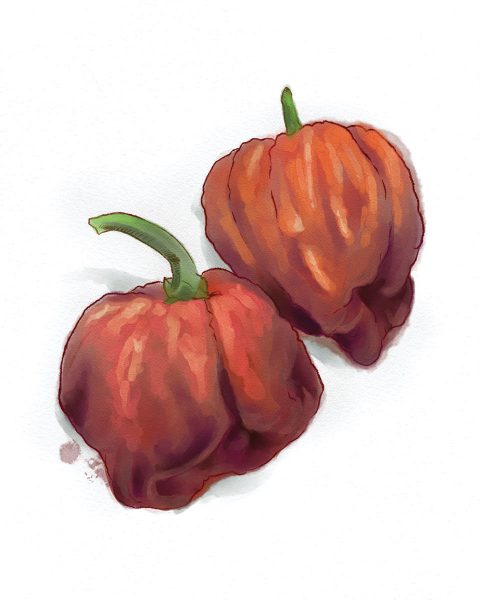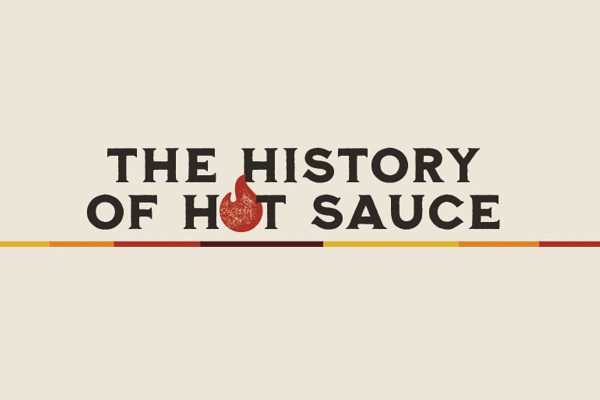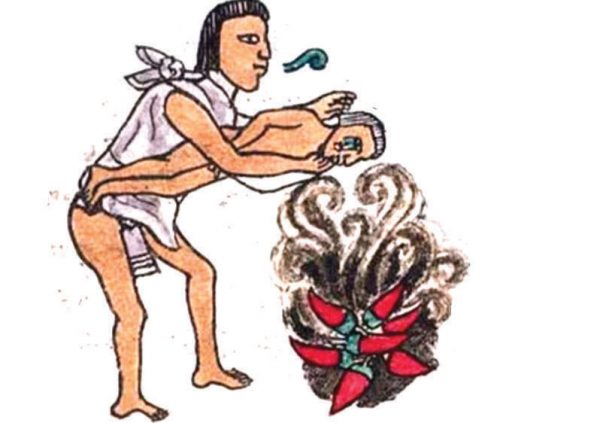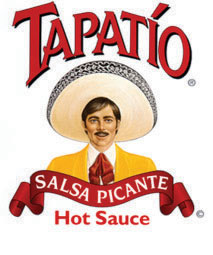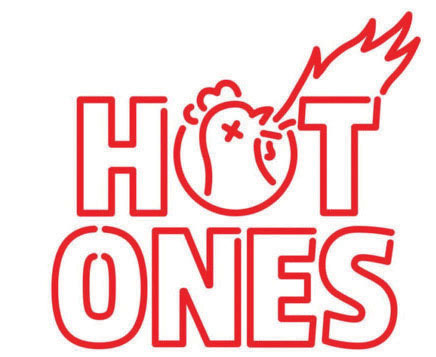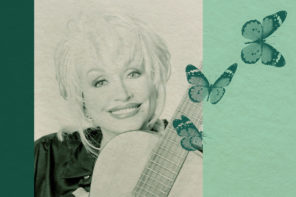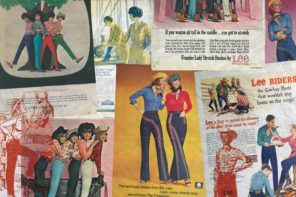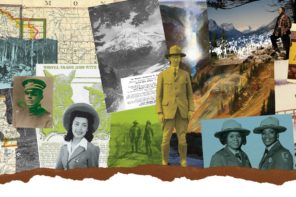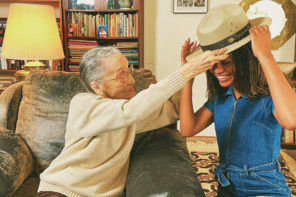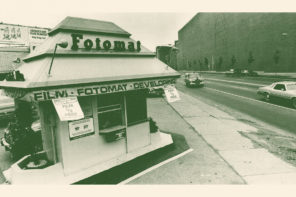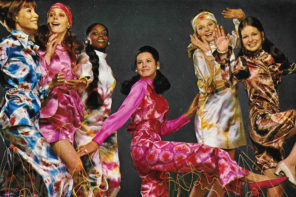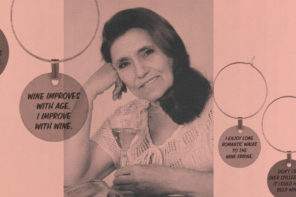The Players
Every team has got its fireballers. But even among hurlers bringing the heat, you’ve got a range: from your Tabasco-level Jacob DeGroms with some finesse to your “pass-the-milk” Nolan Ryans and Ricky Vaughns. We present you The Whalebone Magazine Hot Sauce Issue starting rotation.
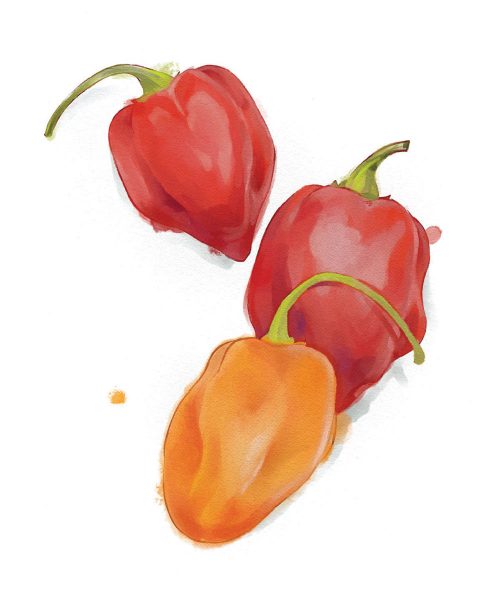
7 Pot
Botanical Name: Capsicum chinense | Scoville Scale: 1,000,000—1,200,000 SHU
Habanero
Botanical Name: Capsicum chinese ’habanero’ | Scoville Scale: 100,000—350,000 SHU
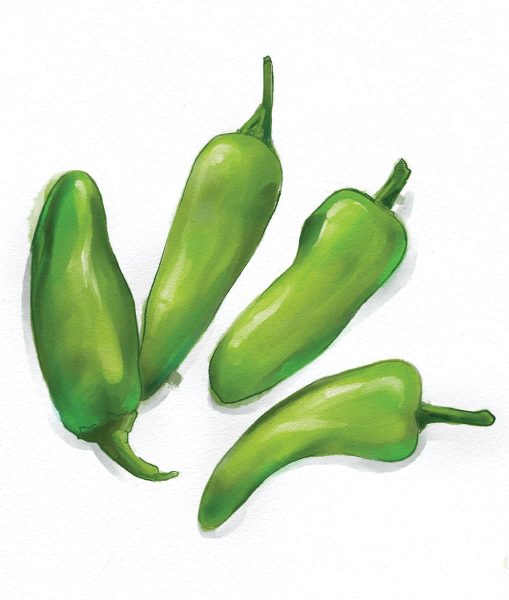
Jalapeño
Botanical Name: Capsicum annuum ’jalapeño’ | Scoville Scale: 2,500—8,000 SHU
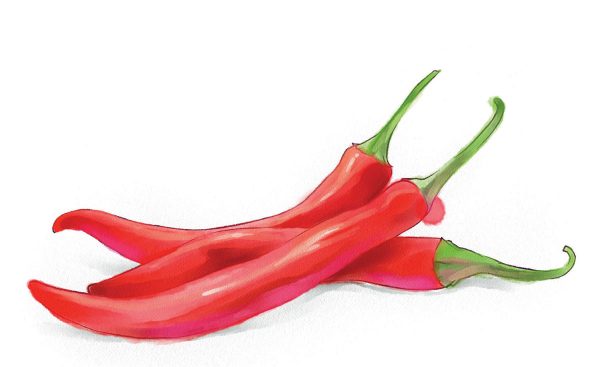
Thai Bird’s Eye Chili
Botanical Name: Capsicum annuum ’Bird’s Eye’ | Scoville Scale: 50,000—100,000 SHU
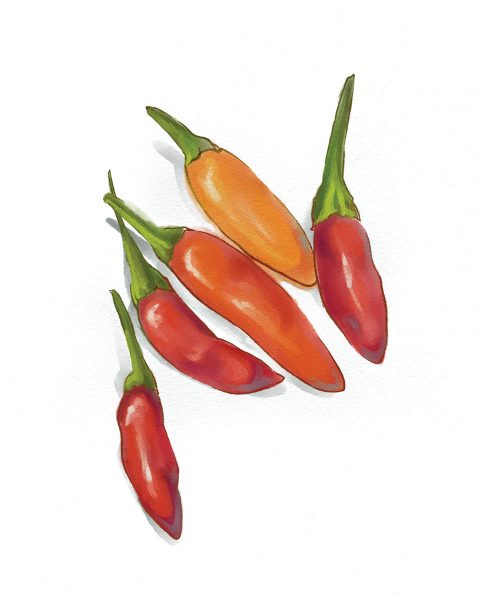
Tabasco
Botanical Name: Capsicum frutescens ’tabasco’ | Scoville Scale: 30,000—50,000 SHU
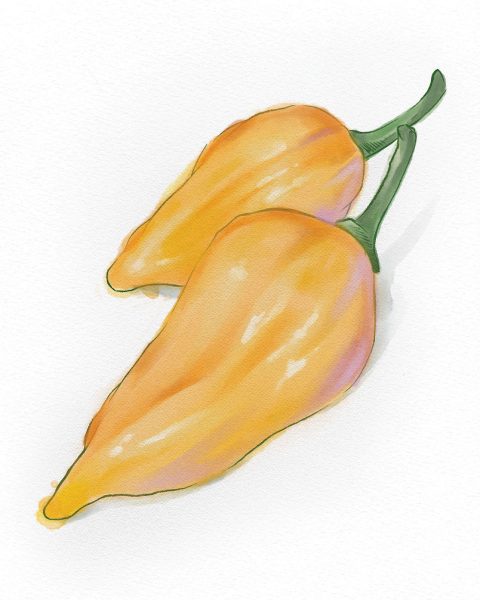
Fatalii
Botanical Name: Capsicum chinense ’fatalii’ | Scoville Scale: 125,000—325,000 SHU
What a long strange, sweaty, spicy trip it’s been.
Hot sauce has been around for a while. Like since-7000-BC-awhile. People throughout the history of the world have been using the spicy stuff for just about everything. Is your food too bland? Throw some hot sauce on it. Oh, your shoulder hurts? Eat this hot sauce. Someone is about to attack you? Hit them with that spray you made from that hot sauce. When in doubt, hot sauce is always the answer.
7000 BC
In between building pyramids and developing their own calendar, it turns out the Aztecs enjoyed a little bit of kick to their meals after a long day of Mesoamerican domination. The origins of early hot sauce date back to around 7000 BC when Aztecs would combine chili peppers with water and use it for basically everything from cooking to medicine and even warfare.
5000 BC
Chili peppers in the Mesoamerican region are domesticated. Chiliarcheologists have traced back the domestication of chilis to the Tehuacán Valley in Mexico around 5000 BC.
1500 AD
Fast forward to the 16th century and the spicy stuff goes global with little help from those guys from Spain with the funny metal hats and their neighbors from Portugal. People across Asia, Africa, Europe, the Caribbean are now developing their own spicy sauce concoctions.
1519
Spanish explorer Juan de Grijalva arrives in Mexico, docking in the port of Tabasco. Seriously the town is named Tabasco.
1542
Chilis reach Asia. Some Portugues missionaries brought the chili to Japan, which later reached Korea.
1570
The Turks introduce the chili to Hungary, where it was first grown as a rare plant by aristocrats but eventually took root in common Hungarian cuisine.

1724
Hungarians first coin the name paprika.
1543–1806
Hot peppers (and hence hot sauce) spread throughout the world through the spice trade and the Silk Road.
1807
The first advertisement for hot sauce appears in a Massachusetts newspaper.
1846–1848
During the Mexican-American War, American soldiers were coming back to places like Louisiana with a distinct new love for chilis, thanks to the influences of Mexican cuisine. This is most likely when the first seeds of the tabasco pepper, from Mexico, made their way into America.
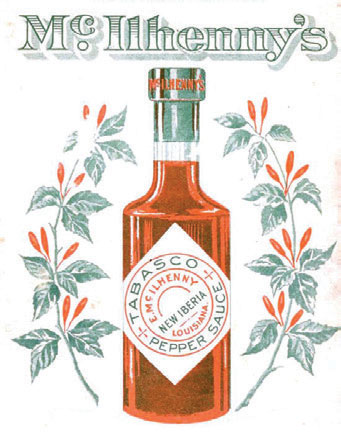
1870
Edmund MchIlhenny obtains a patent for Tabasco Brand hot pepper sauce which is later trademarked in 1906.
1912
Wilbur Scoville creates the Scoville Scale. Billy Scoville measured the heat in chili peppers through the capsaicin levels in peppers by diluting the pungency with water. The more water needed to dilute the pepper, the spicier the plant. Look at the big brains on Willy.
1921
French bartender Fernand Petiot invents the bloody mary at the New York Bar in Paris by spicing up a tomato-based cocktail with Tabasco, perhaps at the behest of Ernest Hemingway.
The 1920s
Crystal, Frank’s Red Hot, Louisiana Brand and Texas Pete’s hit the market, galvanizing the vinegary “Louisiana-style” hot sauce.
1934
Or maybe Petiot created the drink at the King Cole Room in New York’s St. Regis Hotel in 1934, as he told the New Yorker in 1964. Or maybe it was comedian George Jessel at the 21 Club a couple of years before. It seems with everyone drinking cocktails composed of half vodka nobody can remember.
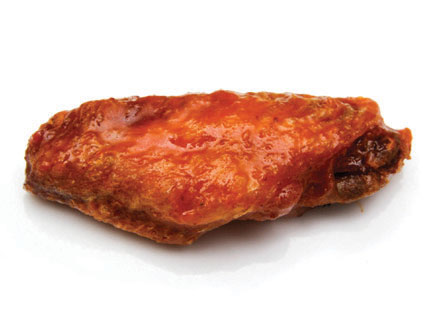
1964
Anchor Bar & Grill in Buffalo, NY invents Buffalo Wings using Frank’s Red Hot and butter. Beer and football now have their ideal match, but it’s kind of a dark day for chickens until cauliflower comes along.
1971
Jose-Luis Saavedra, Sr. begins producing Tapatío in a 750-square-foot building in East Los Angeles and selling it in 5 oz. bottles.
1976
The McIlhenny Company introduces Tabasco Bloody Mary Mix.
1980
Vietnamese immigrant David Tran begins selling a sweet and spicy Thai-style Sriracha with a rooster on the bottle out of a van in Los Angeles.
1985
Buffalo chicken became the best pizza topping thanks to pizza chef Ed LaDou from California Pizza Kitchen.
1992
Move over ketchup, hot sauce replaces ketchup as America’s number one condiment.
1994
“Dumb and Dumber” is released.
2003
Sriracha hits the shelves of Walmart.
2008
Sean Evans graduates from the University of Illinois at Urbana-Champaign with a degree in broadcast journalism. A professor suggests he become a weatherman. Both are unaware of the coming heatwave.
2013
Smokin’ Ed Currie of PuckerButt Pepper Company unleashes the Carolina Reaper on the world, at up to 2.2 million Scoville units, the hottest hot pepper ever created. (A really hot habanero might come in at 500,000 Scoville units.)
2015
Season One of Hot Ones airs.
2016
Beyoncé’s “Formation” hit radio waves, spawning the famous line “I’ve got hot sauce in my bag/swag.” Apparently, so does Hillary.
2017
The Guinness Book of World Records recognizes the Carolina Reaper as the hottest pepper in the world.
2020
Whalebone Magazine’s intern spends many sleepless nights googling “has anyone ever died from eating a Carolina Reaper?”

